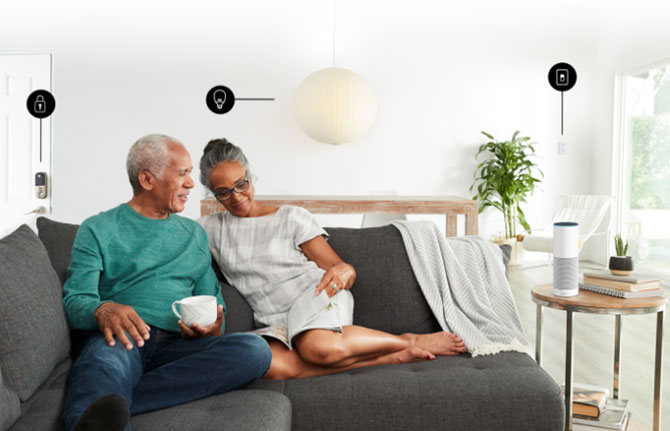
Since the invention of the wifi in 1997, and its introduction into our lives, things have changed forever.
Technology has changed everything, i.e, how we live, our views of life and living, our relationships, the things we use and how we use them, etc.
While we easily got by before, now they have become necessities, even for seniors.
In fact, technology has found a very live, engaging and lucrative market – the elderly. There are devices to monitor heart and blood pressure, fall sensors, vision enhancement, voice-activation and recognition, and many others in the market.
And these are just what we call a veritable “tip of the iceberg.”
Consider these:
1. Wanganui Healthcare System:
Wanganui is a city on the west coast of North Island, New Zealand. It made the news because technology has found its way there.
A local security company, Securely, partnered with Essence to establish a technology-based healthcare management for its senior population.
The system will help elderly people remain in their homes, yet allowing their families to monitor their wellness and safety.
This is done through sensors installed in critical areas of the house that track’s an elderly’s daily activities like opening the ref door, flushing the toilet or switching on the light. Over time, the data gathered is used to predict his regular pattern of activity and sends out an alarm to the family if the pattern is broken.
The system is so user-friendly. It can be voice-activated or through a control attached to a watch’s strap and accessible by a smartphone 24/7.
2. Smart Rollator:

A rollator is a walker or walking frame used by the disabled or elderly people for support and balance while walking or moving around.
This simple and mundane device was given a technological makeover by the VTT Technical Research Center of Finland and Orton to motivate seniors to increase their physical activity.
VTT added sensors and algorithms along the rollator that measure a range of functions covering a typical day of an elderly. These sensors gather data like distance covered in a day or week and use these as a benchmark to motivate the rollator user to do more in the coming days.
3. Treating Faecal Incontinence and Constipation:
Faecal incontinence and constipation are two medical conditions that afflict seniors. Nursing home statistics show that roughly 50% of patients suffer from one or the other.
Faecal incontinence is the uncontrolled bowel movement, while constipation is difficulty in disposing of waste – both affect the internal anal sphincter muscle.
The sphincter is a ring of smooth muscle around the anal opening. It contracts and relaxes without conscious effect. But age weakens the muscle and if other factors such as dementia come in, bowel movement becomes uncontrollable.
Technology, however, does not want to either sit frequently or wait too long, on the toilet seat.
A high-tech procedure was developed by the Department of Medicine at the Sidney Kimmel Medical College of Thomas Jefferson University to contract and relax the sphincter muscle using Magnetic MicroRNAs.
Before you rush to the bathroom, here’s a little beef about the procedure:
– MicroRNA is a cellular RNA fragment that prevents the production of a particular protein by binding to and destroying the messenger RNA that would have produced that protein.
Note: RNA stands for ribonucleic acid, which is present in all living cells. Its main function is to carry instructions from the DNA (deoxyribonucleic acid) for controlling the body’s synthesis of proteins.
Doctors have successfully injected MicroRNA near the anal opening. But by itself, it will dissipate throughout the body. To keep it in place, they put in little metal fragments into it, then injected a small magnet around the solution.
Presto! It stayed in place and was able to regulate the sphincter muscle’s contractions.
The above are just teeny bits of technology applications that have redefined old age. Currently, there are “smart” homes and “smart” devices specifically designed to make the lives of seniors an easy, happy and enjoyable experience.
Image: https://www.amazon.com/Echo-Plus-built-Hub-included/dp/B075RWFCHB
~oOo~